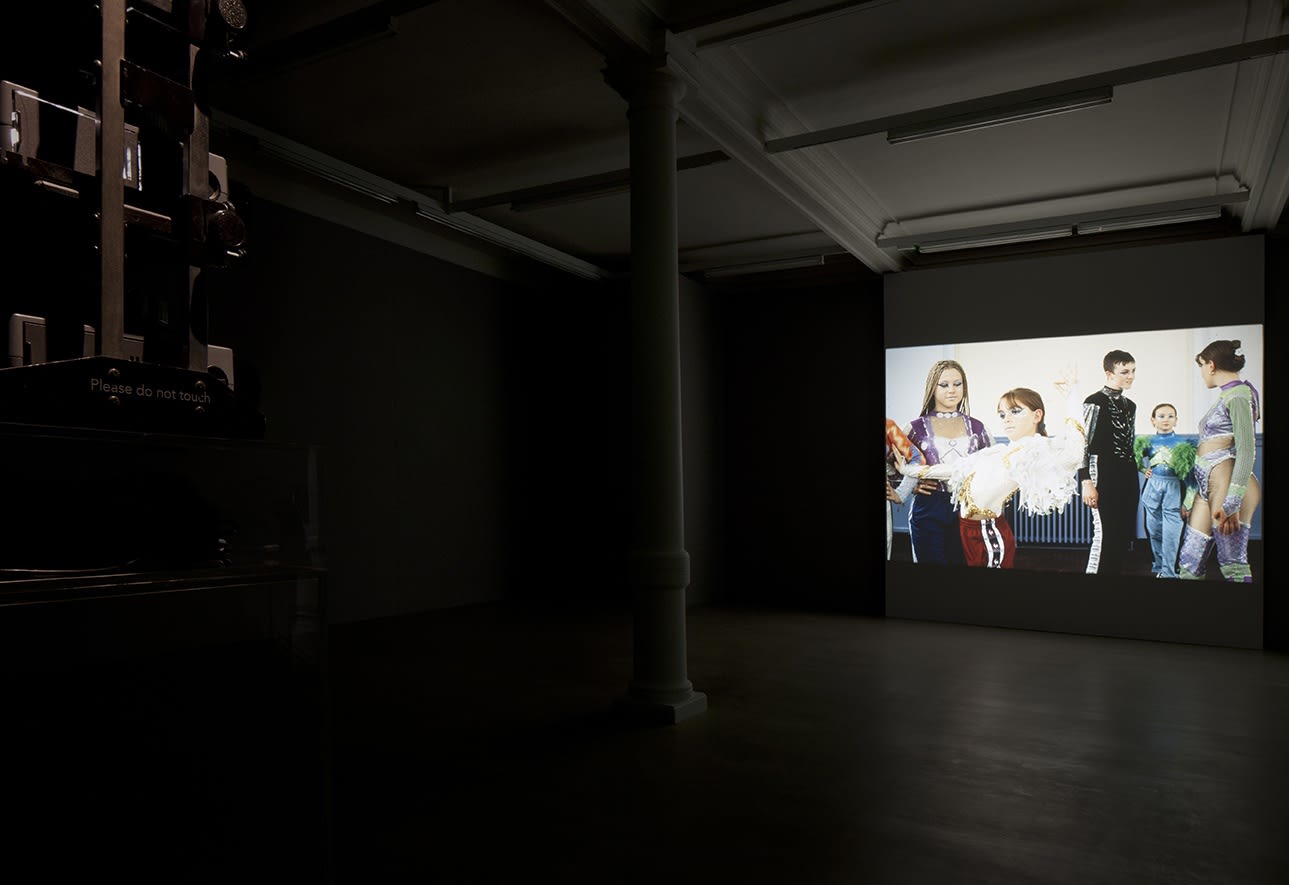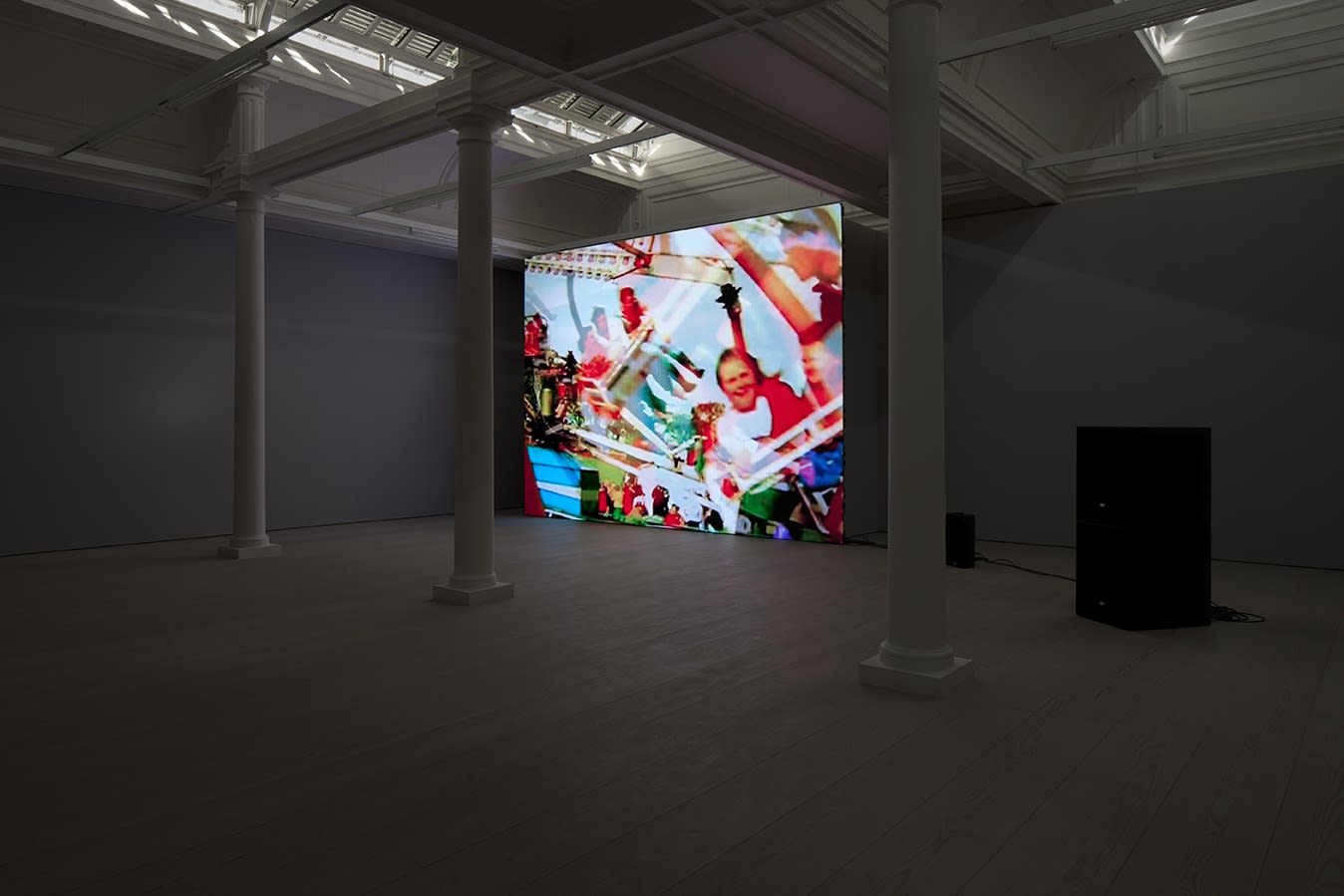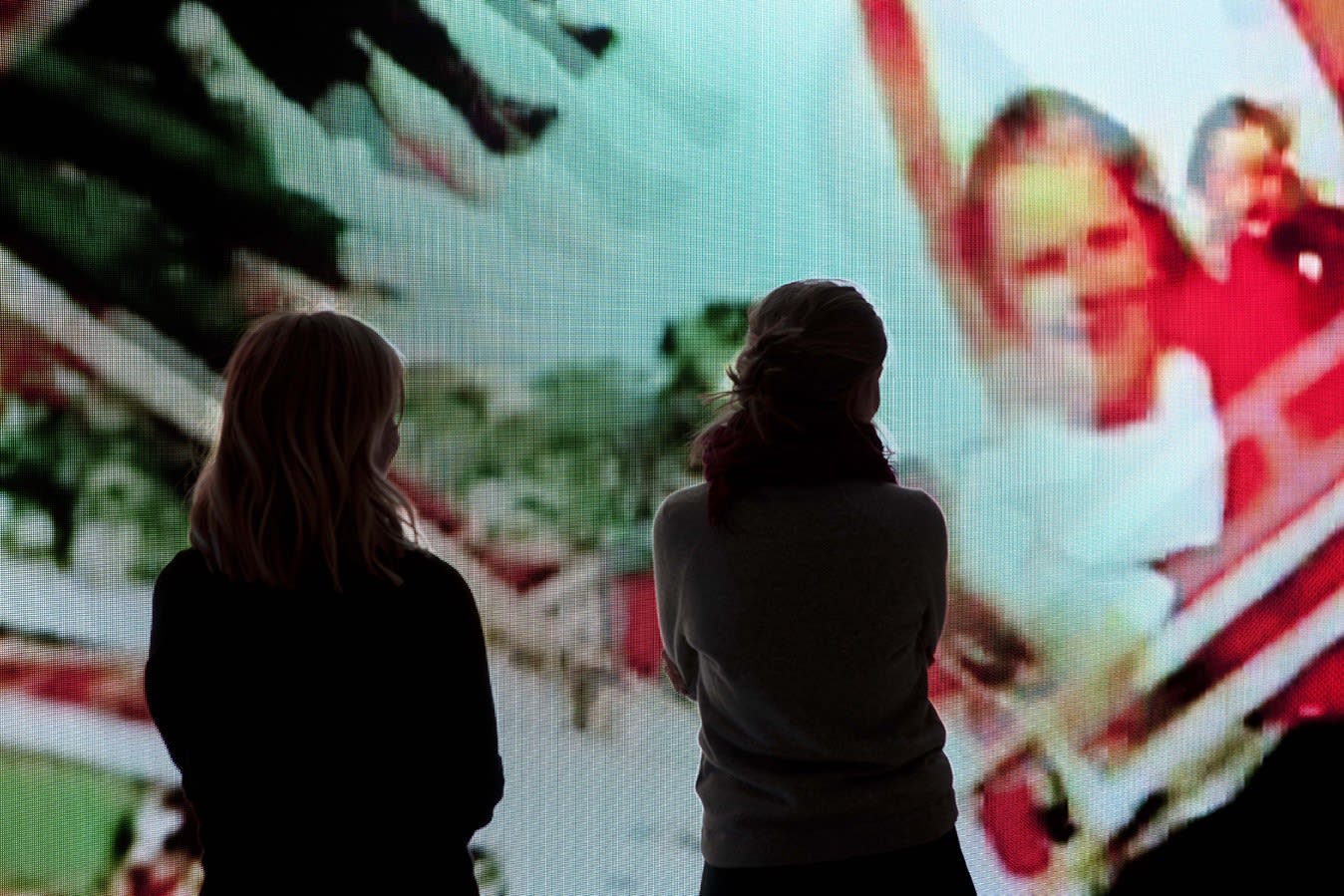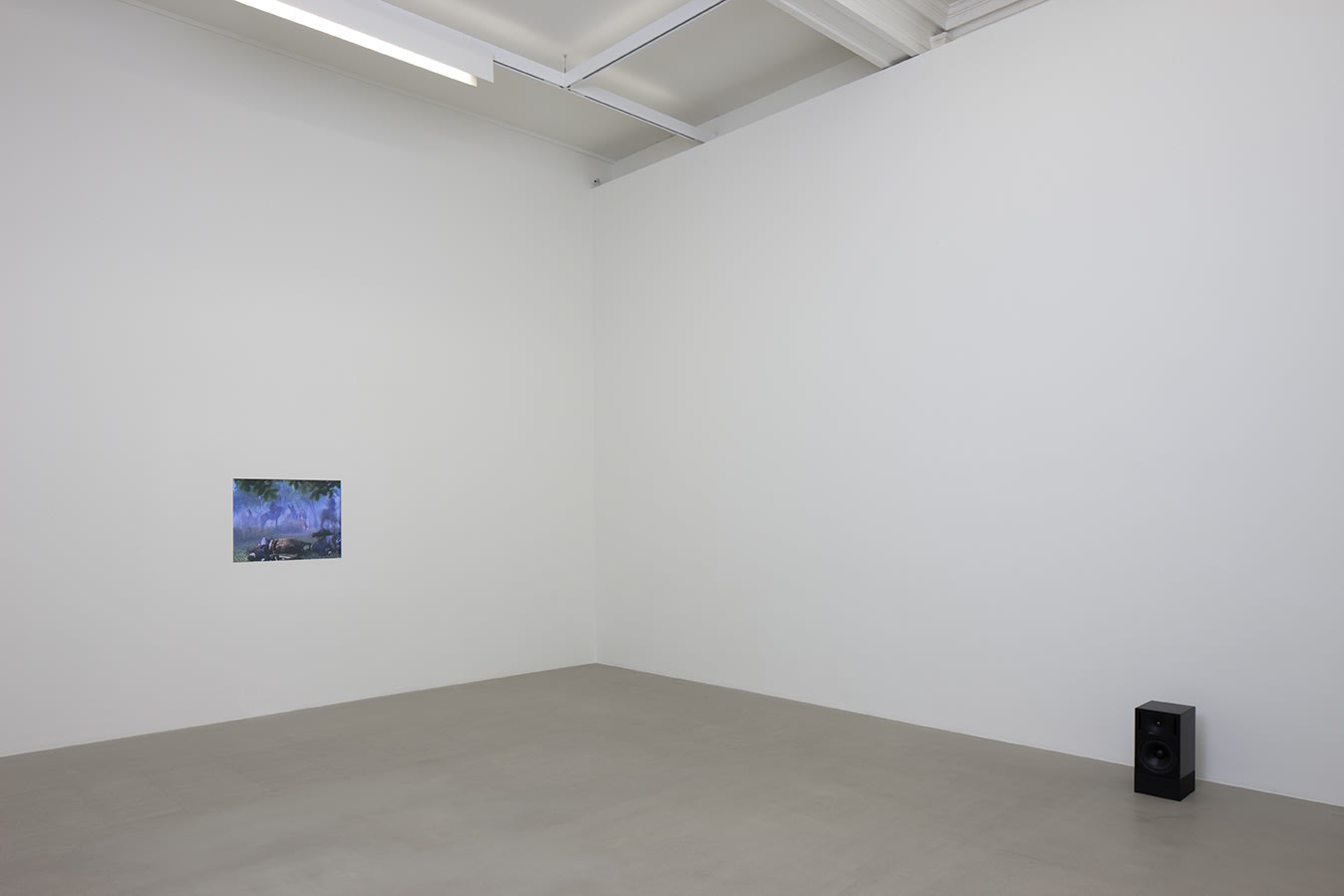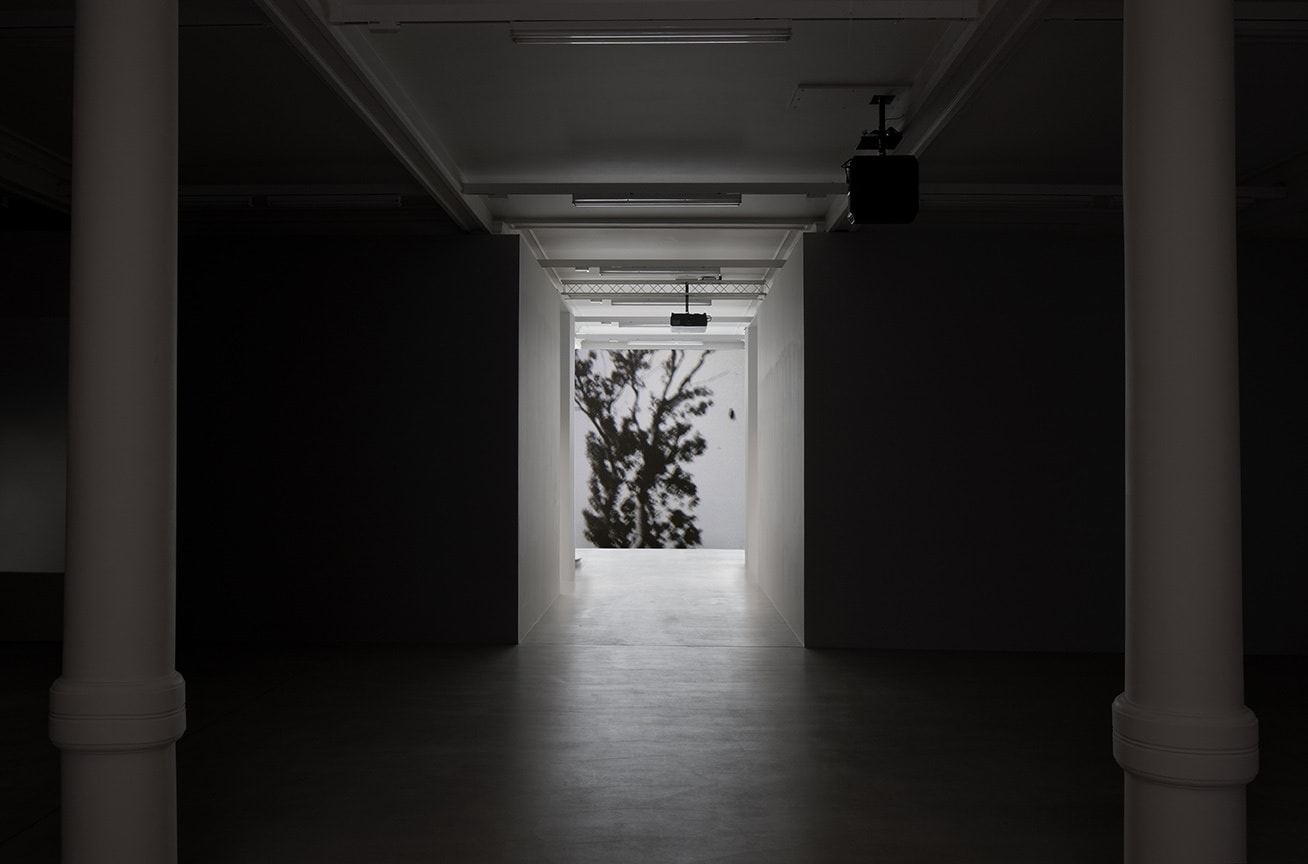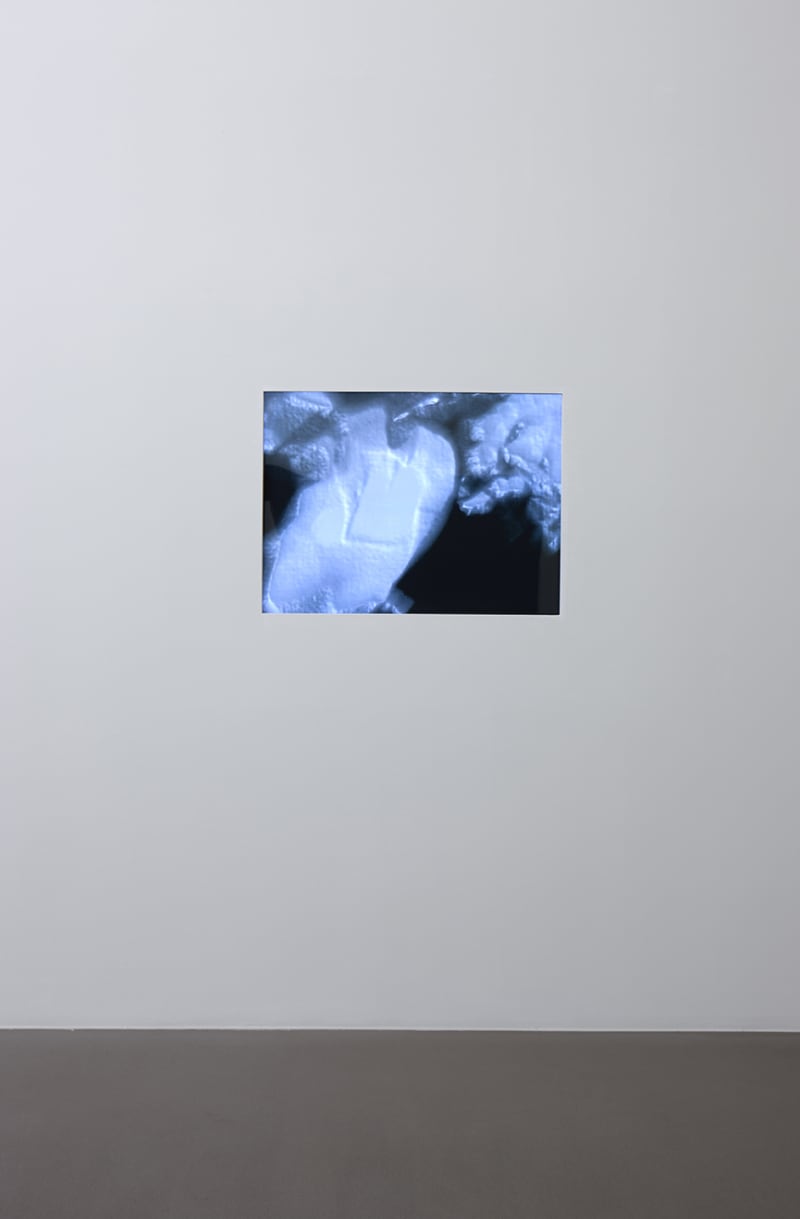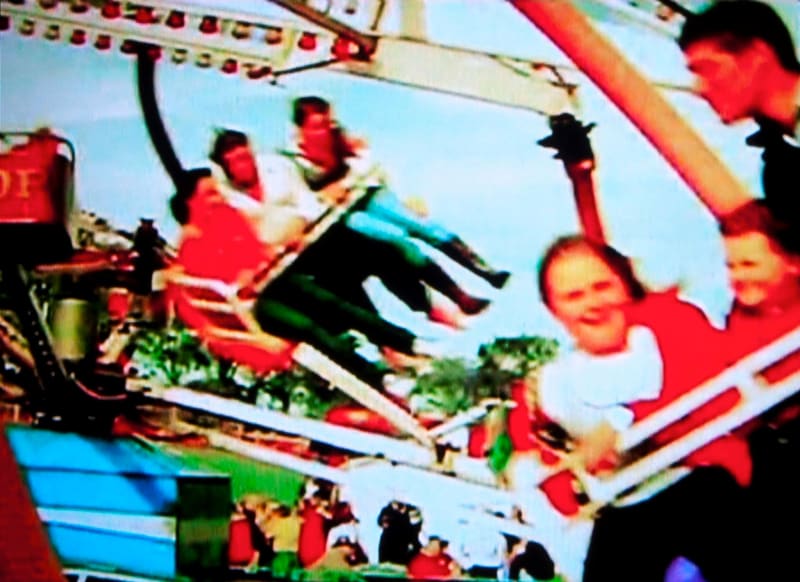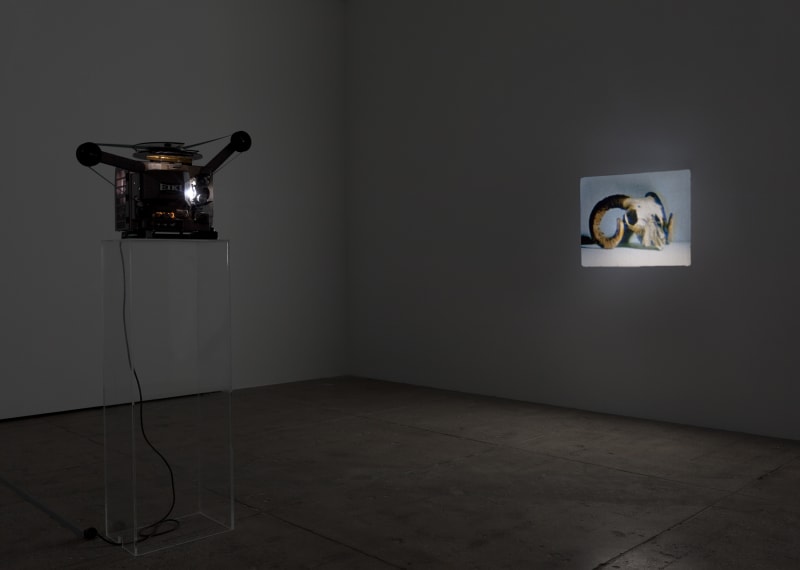Overview
Marian Goodman Gallery is pleased to announce the first exhibition at the London gallery of Dublin and Paris based artist, James Coleman. This will be Coleman’s most extensive exhibition since his 2012 retrospective at the Museo Nacional Centro de Arte Reina Sofia and will both present a survey of iconic earlier works and debut two major film installations that have occupied the artist over the past five years. Since his first exhibition in 1970, Coleman’s pioneering practice has redefined our understanding and expectations of time-based work and has had an immeasurable influence on subsequent generations of artists. Coleman’s critique of the photographic image through meticulously composed slide, film and video projections questions our understanding of how an image accrues meaning and the viewer’s complicity in defining the experience of a work. Despite Coleman’s intensely conceptual approach, his works are characterised by a sensual beauty and economic elegance that results from his embrace of the photographic image’s inherent complexities, uncertainties and potential.
James Coleman
March 4 – April 16, 2016
Opening Reception: Friday, March 4, 6-8pm
Marian Goodman Gallery is pleased to announce the first exhibition at the London gallery of Dublin and Paris based artist, James Coleman. This will be Coleman’s most extensive exhibition since his 2012 retrospective at the Museo Nacional Centro de Arte Reina Sofia and will both present a survey of iconic earlier works and debut two major film installations that have occupied the artist over the past five years.
Since his first exhibition in 1970, Coleman’s pioneering practice has redefined our understanding and expectations of time-based work and has had an immeasurable influence on subsequent generations of artists. Coleman’s critique of the photographic image through meticulously composed slide, film and video projections questions our understanding of how an image accrues meaning and the viewer’s complicity in defining the experience of a work. Despite Coleman’s intensely conceptual approach, his works are characterised by a sensual beauty and economic elegance that results from his embrace of the photographic image’s inherent complexities, uncertainties and potential.
Still Life (2013-16), the first of the two new works in the exhibition, presents a large-scale projection of an uprooted poppy against a black background. The flower seems motionless at first, but over time, slight movements in the roots and petals reveal themselves. In the second new work, Untitled (2011-15), a loud, insistently repetitive and mechanical soundtrack is heard well before arriving at a monolithic wall of LED screens blazing a film of a spinning amusement park ride. The repetitive spinning, in blurred cuts, recalls a skipping record. Of these two new works, Benjamin Buchloh has written:
‘In a dialectical constellation of extreme opposites, James Coleman's two new works, Still Life and Untitled, seem to contemplate the origins and the present currency, the alpha and the omega of representation. Still Life stages a singular, live poppy plant, whose merely microscopically perceptible biological life is traced in a larger than life size filmic projection, as though returning to one of the origins of aesthetic desire, to depict nature, and convey its miraculous operations mimetically. Not accidentally, the poppy as the chosen plant, equally embodies the biological specimen of the flower that has represented the desire for the dream and trance in Western European culture. Its counterpart, Untitled, in utter reversal of the still life structure, is based on a film clip the artist recorded when studying the rotations of a carrousel and the screams and gestures of the inhabitants of its flying chairs. While seemingly a futurist celebration of machinic movement and joyful abandon, the clip is actually subjected to a rigorously structured pattern of programmed repetition, accompanied by an even more ominous enforcement of circular sound, the endless repetition of an unidentifiable, yet uncannily familiar menacing sonoric pattern.’
The exhibition will also include a third major installation, Coleman’s Photograph (1998-99), which consists of multiple, synchronized slide projections accompanied by a narrative voice-over. The sequence of photographs opens with abstracted, soft-focused images, which give way to a series of colourful vignettes from what appears to be a rehearsal for a children’s dance production in a school hall. The narrative appears to follow a young girl on what Kaja Silverman describes as her ‘voyage from solitariness to love’. A type of bildungs-roman, ‘it charts the girl’s journey from a perception which is at war with the colours and shapes of the world to one which embraces them.’ Meanwhile, the soundtrack, in the form of a girl’s voice, offers a melancholic interior monologue on the ‘lone spirit’, the ‘silent soul’ and the ‘dark hours’ in a thoughtful and measured cadence. In line with Coleman’s wider practice and in a keeping with the title of the work, the installation is deeply self-referential, meditating on the form of its own existence. The repeated tableaux of children in brightly coloured costumes framed within shallow sets calls to mind the theatre while the two-dimensional projected images combined with sound is cinematic in structure.
Coleman’s Ligne de Foi (1991), is based on a famous Currier and Ives print of the Battle of Bull Run from the American Civil War. The work exists in two versions: a slide projection and the single channel video shown here. Coleman presents a re-enactment of the historical events illustrated in the print, and asks us to consider the culturally inflected nature of our own perception. Further considering the subjectivity of a singular viewpoint, Park Scene (1972) is a set of three illuminated photographs that depicts the blur of motion of the view out of a carousel ride, confounding the viewer with illegibility and ambiguity, their irregular positioning evocative of the editor’s cut.
Also on view will be a selection of seminal 16mm films made during Coleman’s two decades working and studying in Milan. Each film is a single take, often in static shots, meditating on a prosaic subject. The films will be shown on rotation over the course of the exhibition, and include Pheasant, Work Apron, Clock, La Valle della Morte, Skull and Fly (all from 1970). A schedule for the films will be available from the gallery.
James Coleman (b. 1941, Ireland) studied at the École des Beaux Arts, Paris and the Accademia di Belle Arti, Milan as well as the Central School of Art and Design, London and the National College of Art and Design and University College, Dublin as well as the École des Beaux Arts, Paris and Accademia di Belle Arti, Milan. Coleman represented Ireland at the 1973 Paris Biennial and has participated in Documenta in 1992 (IX), 1997 (X), 2002 (XI) and 2007 (XII). He received both the Kurt Schwitters Prize, Hannover and the Kunstpreis, Munich in 2002. Important solo exhibitions have been mounted at the Institute of Contemporary Art, London in 1986; the Musée d’Art Moderne de la Ville de Paris in 1989; the Van Abbemuseum, Eindhoven in 1989-90; Dia Art Foundation, New York in 1994-95; the Centre Georges Pompidou, Musée National d’Art Moderne, Paris in 1996; the Palais des Beaux-Arts, Brussels and the Fundació Antoni Tàpies, Barcelona in 1999; the Kunstmuseum, Luzern in 2001; the Lenbachhaus Kunstbau, Munich in 2002; the Museu do Chiado – Museu Nacional de Arte Contemporânea, Lisbon in 2004-05; the Irish Museum of Modern Art, Dublin in 2009 and the Museo Nacional Centro de Arte Reina Sofìa, Madrid in 2012. Coleman lives and works in Dublin and Paris.
A fully illustrated, hardback catalogue will be published to accompany the exhibition including texts by Benjamin Buchloh, Lynne Cooke, Jean Fisher, Dorothea von Hantelmann and Kaja Silverman.
The gallery is open Tuesday to Saturday, 10am to 6pm. For more information, please contact Charlie Dunnery McCracken on +44 (0)20 7099 0088 or charlie@mariangoodman.com.
1 Benjamin Buchloh in James Coleman (London: Marian Goodman Gallery, 2016)
2 Kaja Silverman, ‘Girl Love’ in James Coleman (exhibition catalogue), ed. Helmut Friedel, (Munich: Lenbachhaus/ Cantz Verlag, 2002), pp 150-171.
